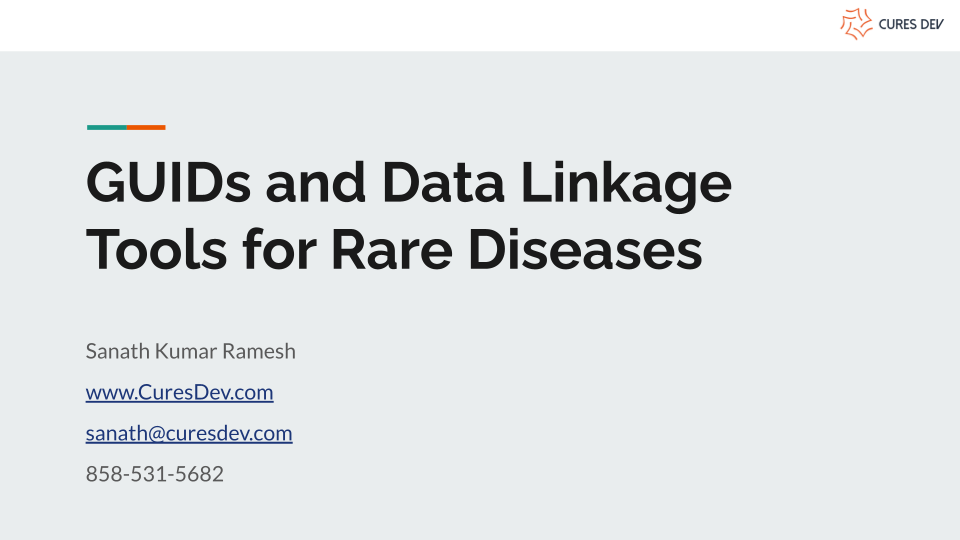How to link rare disease datasets?
GUIDs and Shared Patient IDs are the key to link datasets at patient-level
This post is an extract from the webinar I recently delivered a webinar at C-Path Institute on Rare Disease Data Sharing. You can read the key takeaways in this post or watch the full video with Q&As below.
Key Takeaways
Data silos are failing patients. This excellent paper delivers a powerful position statement on how data silos are undermining drug development - https://ojrd.biomedcentral.com/articles/10.1186/s13023-021-01806-4
Data Sharing = Link + Merge
Link: Ability to connect the data in future
Merge: Copy data together into a new location
Linking is the most important investment you can make:
Implement GUIDs or Identifiers that are shared across databases. They will allow you to Merge data in the future, whenever that might be.
Linking is easy - Create shared identifiers + Get IRB approval to store shared ID
What is a Shared Identifier?:
Identifiers shared between databases based on a rule
Shared identifiers allow you to Link data from two disparate sources
“Same Patient, Same ID” Rule for Shared ID:
Shared IDs implemented using this rule allows you to unify data from disparate sources at the patient-level because all patient records have the same identifier
GUIDs implement this rule.
Systems to generate Shared IDs in a privacy-preserving fashion:
CuresDev gives you uninterrupted view of the patient's journey from diagnosis to treatment
Integrates data from registries, natural history databases, clinical sources and others
CuresDev ID: Generate unique Patient IDs to make datasets linkable.
Open Standard and Open Source: Built in collaboration with experts in data privacy and rare disease drug development
Exclusive to Rare Diseases: Built for globally distributed patients and very small communities. Compliant with global privacy laws and country-specific data residency requirements.
Provable Privacy: Hashing algorithm provides mathematically provable privacy guarantees. It uses Bloom Filters with Differential Privacy. End-to-end Encryption keeps the data safe.
Record-Level Privacy Controls: Patients and Data Owners can setup rules that decide if and when their data from two databases gets merged. Very low chance of re-identification
Compatible with other GUIDs: If your database already implements a GUID system, you can still leverage implement CuresDev ID and leverage the privacy benefits.


